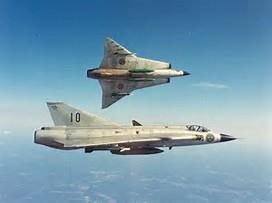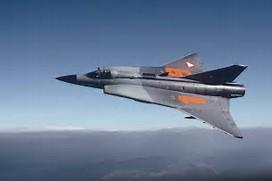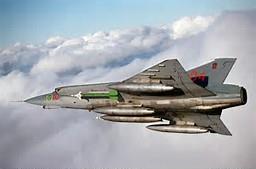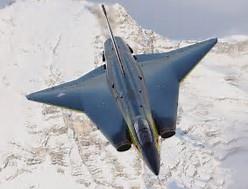S'sonic
Stealth
Menu
A free template by Lucknowwebs.com for WYSIWYG WebBuilder 8
Nigel G Wilcox
Powered by Sispro1-S
Paragon Of Space Publication
© Copyright Reserved - United Kingdom
Ideal Screen Composition 1024 x 768
SITEMAP
PSEUDO SCIENCE
SCIENCE RESEARCH
ABOUT
Desk
Supersonic
Stealth
Study
Menu
MAIN INDEX
Fastest Air Planes
Space
Transport
Menu
Saab 35 Draken
The Saab 35 Draken was a Swedish fighter aircraft developed and manufactured by Saab between 1955 and 1974. It holds the distinction of being the first fully supersonic aircraft to be deployed in Western Europe.
Maximum speed: 2,124 km/h (1,320 mph) Range: 2,019 mi Maiden flight: 25 Oct 1955 Length: 50.36 ft Wingspan: 30.84 ft Cruising speed: 950 km/h (590.30 mph)
The Saab 35 fighter aircraft started being planned as a replacement for the J 29 Tunnan in the autumn of 1949 under the leadership of Erik Bratt. The Swedish defence materiel procurement authority required the aircraft to perform at high supersonic speeds and be able to engage targets at high altitudes.
At that time there was limited understanding of supersonic aviation, which is why the "double delta" configuration had been tested earlier in 1952 using the specially developed Saab 210 "Little Dragon" experimental aircraft. The maiden flight was carried out on 25 October 1955 by Bengt Olow and shortly afterwards, in January 1956, the Draken broke the sound barrier while climbing and without afterburner!
Series delivery of the first version, J 35A, started at the end of 1959. New versions were developed and delivered up to 1977 by which time a total of 611 aircraft had been built. On 8 December 1998, the Draken was retired after nearly 40 years service in the Swedish Air Force.
Draken was Saab's first military aircraft to have been exported in significant numbers. The Danish, Finnish and Austrian air forces purchased a total of 122 aircraft, some of which had been previously used by the Swedish Air Force. Draken continues to be used in the USA for training test pilots.
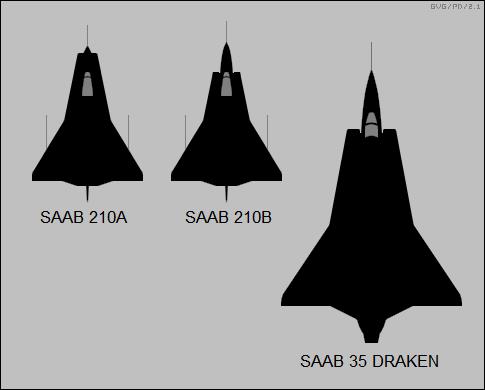

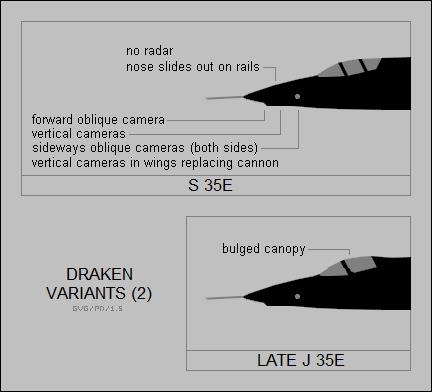
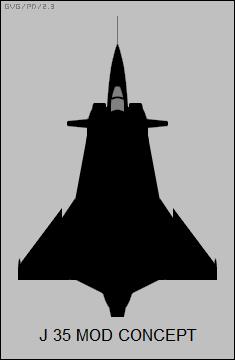
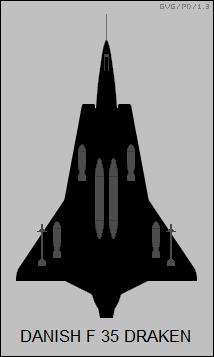
The Draken is designed as a tailless middle double-delta wing fighter, with a single tail and a single engine (A Volvo Svenska Flygmotor RM6C, bestowing a maximum speed of 2125 km/h / 1,317 mph). Its double-delta wings allow good high and low speed performances. It also provided good fuel and armament capacity. The engine air inlets are located mid-wing at each side of the cockpit, featuring a characteristic egg shape.
Considered an easy-to-fly platform, yet not suitable for untrained pilots given the high sensibility controls, and being prone to ‘superstalls’ as a very stable platform with good low flight.
Although the avionics were in principle basic, the radar was a very sophisticated one - A PS-02/A based on the French radar Thompson-CSF Cyrano - integrated with an Ericsson version of a radar Thompson-CSF Cyrano S6 fire control system. It also incorporated VHF/UHF radio, a radio altimeter, a transponder, an IFF (Identification Friend or Foe) system, and the Swedish version of the Lear-14 autopilot. The seat of the pilot was reclined 30 degrees, similarly like the Viggen, to allow the pilot to resist G-forces. And the cockpit was fitted with air-conditioning and pressurization.
J35J Green Camouflage
The engine in combination with the design, made the Draken a very manoeuvrable and fast fighter jet, with the braking parachute assisting the aircraft in the landing, reducing the distance required to reach a full stop. Earlier version of the Draken had two 30 mm Aden M/55 cannons, with later versions having only one cannon. Also some export versions kept the two cannons configuration.

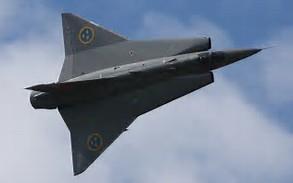

Operators
Sweden - The Flygvapnet had 544 Draken: 90 J 35A; 73 J 35B; 25 Sk 35C; 120 J 35D; 60 S 35E; 208 J 35F; and 76 J 35J. Many were upgraded or modified airframes, so the number is an approximation. Many were sold to other countries.
Austria - The last exporter of the Drakens. The Österreicher Luftstreitskräfte received 24 J 35Ö - ex-Swedish J 35D - to replace the J 29F Tunnan in 1987. Initially many Draken (5 Sk 35C) remained in Sweden for training purposes, being replaced later by a simulator. The Austrian Draken were originally armed with two 30mm Aden cannons, as AIM missiles were restricted by a treaty after WWII. But as the crisis escalated in former Yugoslavia by 1993, deeming that cannons were not enough to protect the airspace, Austria acquired AIM 9P3 and AIM 9P5 Sidewinder missiles from the US and equipped them on the Draken.
Finland - The second exporter of Drakens, receiving 12 all-weather J 35XS interceptors, 7 ex-Swedish J 35BS, 24 ex-Swedish J 35FS and 5 ex-Swedish Sk 35CS, all to serve with the Suomen Ilmavoimat.
Most of the received aircraft were delivered in kit form and assembled by Valmet in Finland, and had also two Aden 30 mm cannons. Finland used the Draken as interceptors and fighter-bombers, and retired them in 2000.
Denmark - The first country in exporting the Draken, with units being received in 1970. As the original version was the least favoured during the competition for a new Danish fighter, Saab created a new version (J 35XD), based on the J 35F. the structure was strengthened in order to allow more payload - 9 reinforced pylons - with simultaneous use possible. The landing gear was reinforced with an added arrestor hook, and had two Aden 30 mm cannons, as well as extra fuel capacity. Being a European cost-effective platform, plus the improvements, made the Kongelige Danske Flyvevåben to choose the Draken. 20 A 35XD ground attack fighters (denominated F35), 30 S 35XD reconnaissance (denominated RF35), and six Sk 35XD training (denominated TF35) were purchased. 7 additional aircraft were purchased to be cannibalized. Danish training and reconnaissance versions were fitted with cannons and pylons to carry weapons, thus having secondary combat capabilities. 5 further Drakens (TF35) were purchased. Receiving upgrades in the following years, the Draken were retired from Danish service in 1993.
US National Test Pilot School - Operated 6 Drakens, formerly Danish Air Force jets training and reconnaissance versions.
Armament
• 1 Aden 30mm Cannon
• 6 hardpoints that could allow 1700 kg of payload. A pod for a 135mm Bofors M70 rockets; air-to-air Rb 24, Rb 27 or Rb 28; external fuel tank; iron bombs; cameras.




